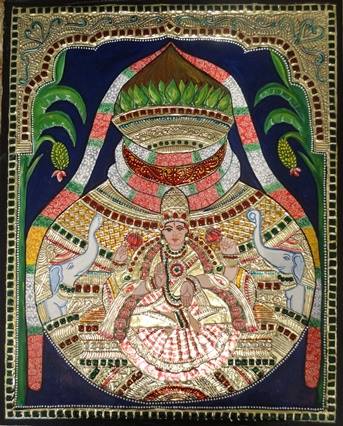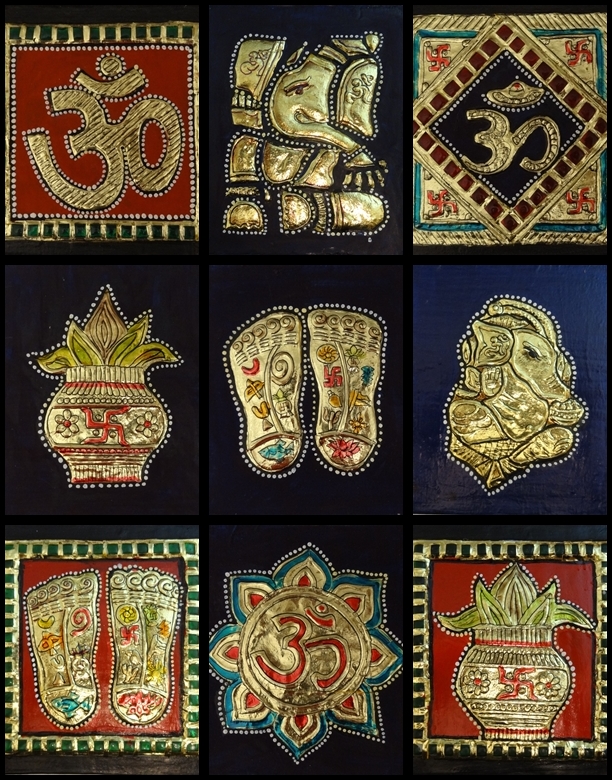

Welcome
Tanjore Art is an ancient and antique form of art which dates back to 1600 AD. I had an immediate fondness for this divine art and today it is my passion in bring life to my imagination through this art form. It is a perfect blend of spirituality with modernity. These sacred pieces of art provide solace and inspire faith. The splendour and radiance of the Tanjore paintings is everlasting.
My journey with this exquisite art began more than a decade ago through my mother. It is our endevour to create a fusion of art and spirituality for peaceful bliss to all.
Tanjore Art History
Tanjore Art is an ancient and antique form of art which dates back to 1600 AD. This art from takes its name from the city of Thanjavur or Tanjore as it was earlier known. The Chola region was well known for its wall paintings enen before the Nayak kings became the rulers in the 16th century. They invited the best artists to decorate the ceilings and walls of the temples with varied themes especially from mythology. All kinds of art forms including wall and ceiling paintings flourished under the Viceroy of the Vijayanagar ruler and his descendants. These wall and ceiling paintings were the forerunners of Tanjore paintings as it seen today. During Maratha and Serfoji rulers the paintings evolved further. The artisans experimented in other ways like decorating vahana of the processional deities in the temples, or embellish inside and the entrance of the resting room of the Gods.
Tanjore paintings are intricately made paintings done through a detailed and time consuming process. The painting was generally made on a canvas pasted over a plank of wood with Arabic gum. The canvas is then evenly coated with a paste of French chalk and a binding medium and dried. It is then smoothened for use. Then the picture is drawn on the canvas. A paste made of limestone powder and a binding medium is used for creating the Gesso work. Gold leaves and gems of varied styles are veneered in designated areas like pillars, arches, draperies, cushions, stools, thrones, dresses, crowns, etc. Then, colors are applied on the paintings. Finally the painting is finished with detailed work on the Gold and crystals.
The favorite theme was that of Krishna – as a baby on a floating peepal leaf, as a child eating butter, standing with his bansuri under the tree, with Radha or Gopis or Rukmini and Sathyabhama. Conventions are followed for skin tones of the figures. Krishna as a baby was painted white, Yashoda, Radha, Sita in light yellow, Parnati, Rama and Lakshmana were painted in different hues of green. The portrayal of figures in the paintings was also typical with almost all the figures having rounded faces with almond-shaped eyes and smooth, streamlined bodies. The main subject/ deity is much larger than the other subjects and occupies the centre of the painting. Angels are usually flanking the main figure. The figures were painted with bright flat colours except for the face where shading was shown.
Special's
Month's Special

Special Gifts






Connect with Us
Dial Us @ +91-9650655658
Email Us @ aaks.gupta@gmail.com